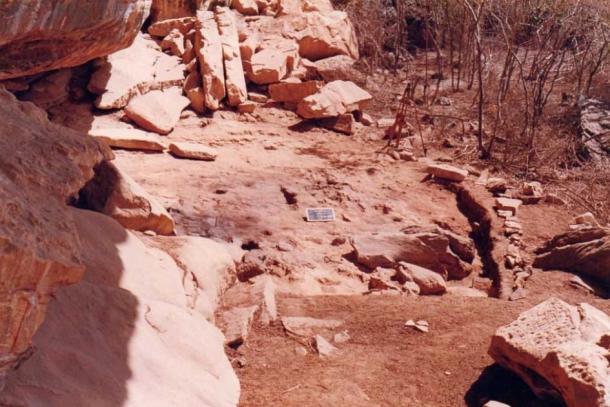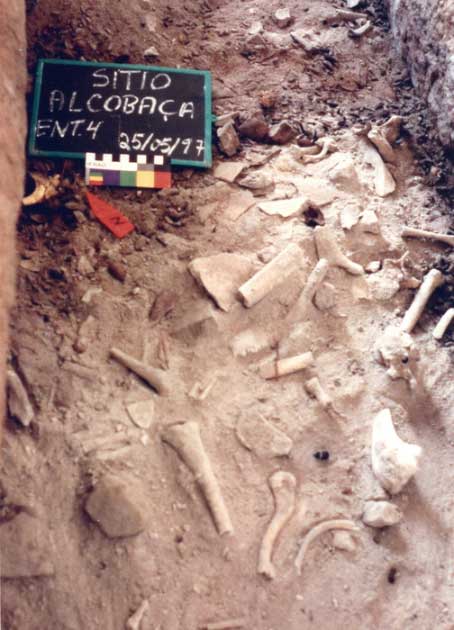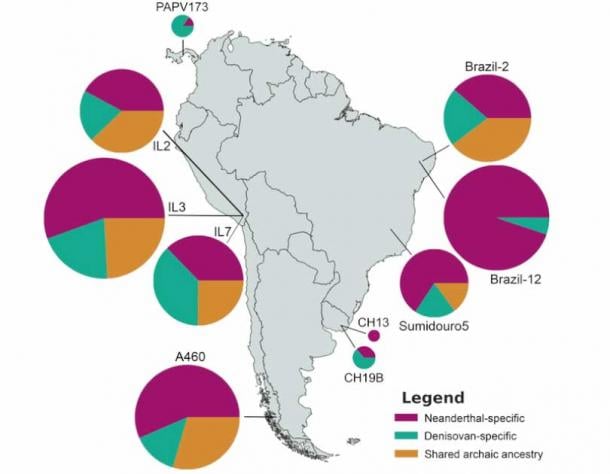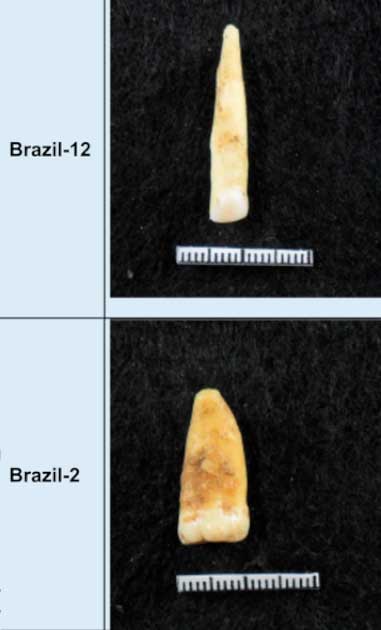
DNA Analysis Reveals Surprising South American Migration Patterns
A new study based on cutting-edge genetic analysis has revealed startling new information about South American migration patterns. By carrying out a complete genetic sequencing of DNA provided by human remains excavated in Brazil, researchers have pieced together a vision for how humans first settled South America and made inroads into resolving the Americas puzzle.
Following the Clues to Understand South American Migration
After leaving Africa in large numbers between 90,000 and 60,000 years ago, modern humans gradually spread all across the globe, leaving Antarctica as the only unsettled continent. The American continent was the last to be occupied and settled by these ancient migrants, who traveled over the Bering Strait land bridge (Beringia) from what is now Siberia into northern North America between 30,000 and 11,000 years ago.
Many people crossed over this land bridge during this time period, moving first eastward and then southward along the coastline of the Americas. Other migrants may have sailed southward along that coast, using Beringia as a launching point.
- By Land or Sea? The Heated Debate on the Peopling of the Americas Continues…
- Skull Analysis Concludes the Americas Were Settled by More than One Wave of Migrants
Once they arrived in South America, the earliest migrants dispersed in many directions. Archaeologists and other researchers have had a hard time tracing their exact movements, in part because the evidence is scarce and in part because the clues that has been found are often confusing. It seems that migration and settlement patterns in the earliest days of the Americas were complex and may not have followed along the expected routes.

The Alcobaça archaeological site, in which the skeletal remains of Brazil-12 (northeast Brazil) were unearthed. (Henry Lavalle / Universidade Federal de Pernambuco and Ana Nascimento, Universidade Federal Rural de Pernambuco)
Using DNA to Reveal South American Migration Patterns
Searching for answers to these ancient mysteries, a team of archaeologists, anthropologists and genetics experts from Florida Atlantic University and Emory University carried out a complete genetic sequencing of DNA taken from two human skeletons unearthed at the Pedra do Tubarão and Alcobaça sites in northeast Brazil.
Applying powerful techniques of computational genetic analysis, the researchers have been able to recreate the travels of indigenous peoples who settled along South America’s Atlantic seacoast. Some of what they’ve discovered, published in Proceedings of the Royal Society B. (Biological Sciences), is quite surprising. But it is also extremely illuminating.
Through their deep genetic analysis, the researchers found evidence verifying the movement of peoples from north to south into South America a long time ago, which harmonizes with discoveries from the existing archaeological record. But they also detected genetic markers indicating that south-to-north migrations along the Atlantic coast had occurred as well, and they determined that this movement had played a significant role in the peopling of that region of South America.
What is really surprising here is that this South American migration took place only 1,000 years ago, along a route that was 3,270 miles (5,277 km) long and that linked northeast Brazil with ancient Uruguay and with what is now Panama.

The Alcobaça archaeological site, in which the skeletal remains of Brazil-12 (northeast Brazil) were unearthed. (Henry Lavalle / Universidade Federal de Pernambuco and Ana Nascimento, Universidade Federal Rural de Pernambuco)
Human Settlement of South American Atlantic Coast
The findings of the research team revealed a clear relationship between ancient genomes harvested from skeletal remains in northeast Brazil, southeast Brazil, Uruguay, and Panama. Remarkably, these discoveries also show that mass settlement in the Atlantic coast region of South America only occurred after most of the Andes and the Pacific coast regions had already been extensively populated.
“Our study provides key genomic evidence for ancient migration events at the regional scale along South America’s Atlantic coast,” study co-author Michael DeGiorgio, a computational genetics expert who studies human evolution, said in a Florida Atlantic University press release. “These regional events likely derived from migratory waves involving the initial Indigenous peoples of South America near the Pacific coast,” explained DeGiorgio.
Intriguingly, the researchers also found genetic indicators that suggested a link with the ancient residents of Australia and Papua New Guinea. These indicators were discovered inside the ancient DNA samples obtained from a skeleton unearthed in Panama.
“There is an entire Pacific Ocean between Australasia and the Americas, and we still don’t know how these ancestral genomic signals appeared in Central and South America without leaving traces in North America,” said the study’s lead author Andre Luiz Campelo dos Santos, an archaeologist who is also affiliated with Florida Atlantic’s Department of Electrical Engineering and Computer Science.

The figure depicts the deep ancestries of the ancient individuals of the Americas and archaic ancestry in ancient South America and Panama. The pie chart radius reflects the proportion of shared archaic ancestry in the individual. (Florida Atlantic University)
Neanderthal and Denisovan DNA in South America
In addition to the important data they discovered relating to ancient South American migration patterns, the scientists also found measurable quantities of both Neanderthal and Denisovan DNA in the South American and Central American genomes. This development would have resulted from contacts that occurred between modern humans and their long-extinct hominin cousins in Eurasia before any migration to the Americas took place.
Interestingly, a greater quantity of Neanderthal genetic material was found in the genomes of the two individuals who died 1,000 years ago in northeast Brazil. But among the genomes collected from ancient residents of Uruguay and Panama, there was more Denisovan DNA than Neanderthal DNA.
Relatively little is known about the Denisovans, who occupied eastern and northeastern Asia long before humans migrated out of Africa in large numbers. “It’s phenomenal that Denisovan ancestry made it all the way to South America,” exclaimed Emory University anthropologist John Lindo, a study co-author who specializes in ancient DNA analysis.
“The admixture must have occurred a long time before, perhaps 40,000 years ago,” continued Lindo. “The fact that the Denisovan lineage persisted and its genetic signal made it into an ancient individual from Uruguay that is only 1,500 years old suggests that it was a large admixture event between a population of humans and Denisovans.”

Researchers used teeth from ancient samples collected in archeological sites in northeast Brazil. Teeth are especially important in ancient DNA analysis because of the excellent preservation of biomaterials within the tooth. (Laboratório de Arqueologia Biológica e Forense / Universidade Federal de Pernambuco)
Genetic Technology is Revolutionizing Archaeology
This exciting new study represents a triumph of genetic and archaeological analysis. Approximately a dozen genetic sequences from ancient humans have been obtained from skeletal finds in Central and South America. This may seem like scarce evidence, but it was enough to allow the researchers in this new study to make some fascinating and revealing comparisons.
Lead author Andre Luiz Campelo dos Santos and his colleagues discovered the two ancient humans from northeast Brazil, which they confirmed were approximately 1,000 years old. Samples of the remains were sent to John Lindo at Emory University for DNA extraction and sequencing, and the raw data he collected was then transferred to Florida Atlantic University for computational analysis.
- New Evidence Pushes Back Peopling of the Americas Almost 20,000 Years
- Vale da Pedra Furada Stone Tool Questions First Americans Timeline
Notably, the genetic material taken from the individuals found in southeast Brazil were about 9,000 years older than the DNA collected from the ancient humans found in northeast Brazil, Uruguay, and Panama. Overall this gave the researchers samples that were spread out in both time in space, making it easier to draw conclusions about the links between changing genetic heritage and migratory movements.
“This groundbreaking research involved many different fields from archaeology to biological sciences to genomics and data science,” said Stella Batalama, the dean of the FAU College of Engineering and Computer Science. “Our scientists at Florida Atlantic University in collaboration with Emory University have helped to shed light on an important piece of the Americas puzzle, which could not have been solved without powerful genomic and computational tools and analysis.”
Top image: Image depicting South American migration patterns. Source: Florida Atlantic University
By Nathan Falde
















Comments
I'm having a hard time understanding whether the original articles included the obvious errors in this article, or if your authors transcription is responsible. Firstly, the claim that Sth America was only peopled a thousand years ago is hardly believable. Secondly, I'm bot sure what was photographed and titled Brazil 12, but they weren't teeth. Unless those teeth were between four and six centimetres long and apparently mono rooted. Considering the overall accuracy shown, I also refuse to believe that genuine genetic markers were present that indicated Australasian DNA. I will err on the side of caution and think a more probable cause was DNA contamination post dig, or a misinterpretation in the lab.